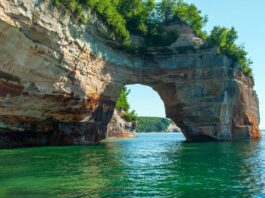
Located within the heart of the Namib Desert, Sossusvlei is one of the most iconic landscapes in Namibia. Known for its towering red dunes and stark white salt pans, this region offers a surreal mix of vibrant colors, unique geological features, and ancient desert ecosystems. To fully appreciate the magnificence of Sossusvlei, it is essential to delve into the geological history, processes, and landforms that have shaped this spectacular natural wonder.
Geological Setting: The Namib Desert
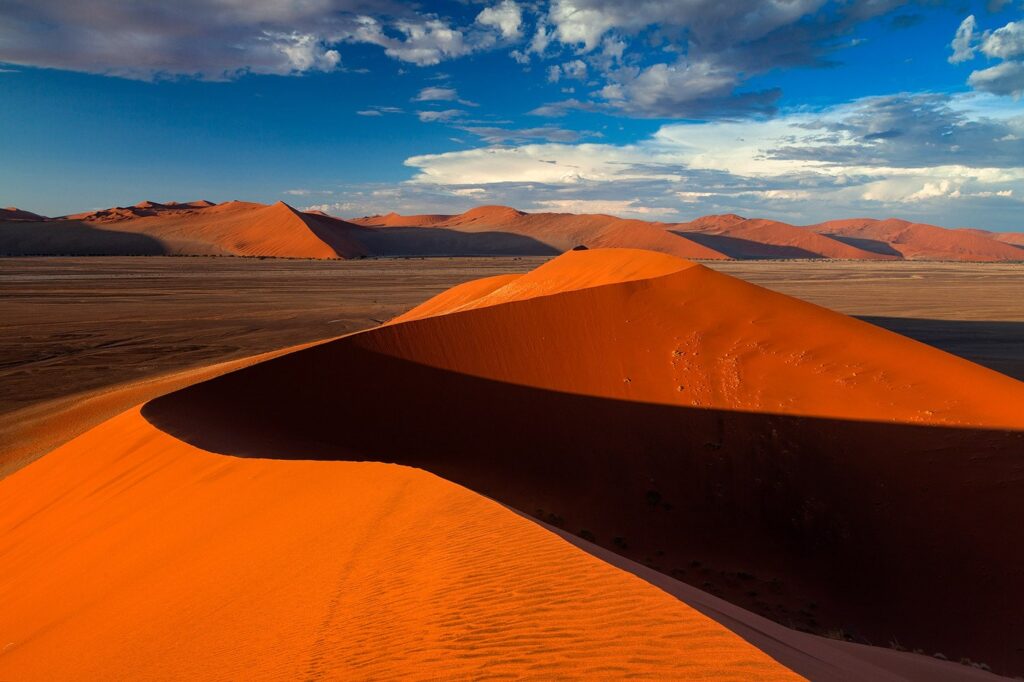
Sossusvlei lies within the Namib Desert, one of the oldest and driest deserts on Earth, with some parts of it having been arid for more than 55 million years. This long-standing aridity has created a landscape dominated by wind-shaped features, particularly the sand dunes that stretch over vast areas. The desert itself runs parallel to Namibia’s Atlantic coastline and is defined by its hyper-arid conditions, which result from the cold Benguela Current off the coast, minimizing rainfall by cooling the air and reducing moisture.
The underlying bedrock of the Namib Desert consists of ancient metamorphic rocks that form part of the African craton, dating back over a billion years. Overlying this ancient bedrock are sedimentary formations from the Paleozoic and Mesozoic eras, which further contribute to the complex stratigraphy of the region.
The Origin of Sossusvlei: Eolian and Fluvial Interplay
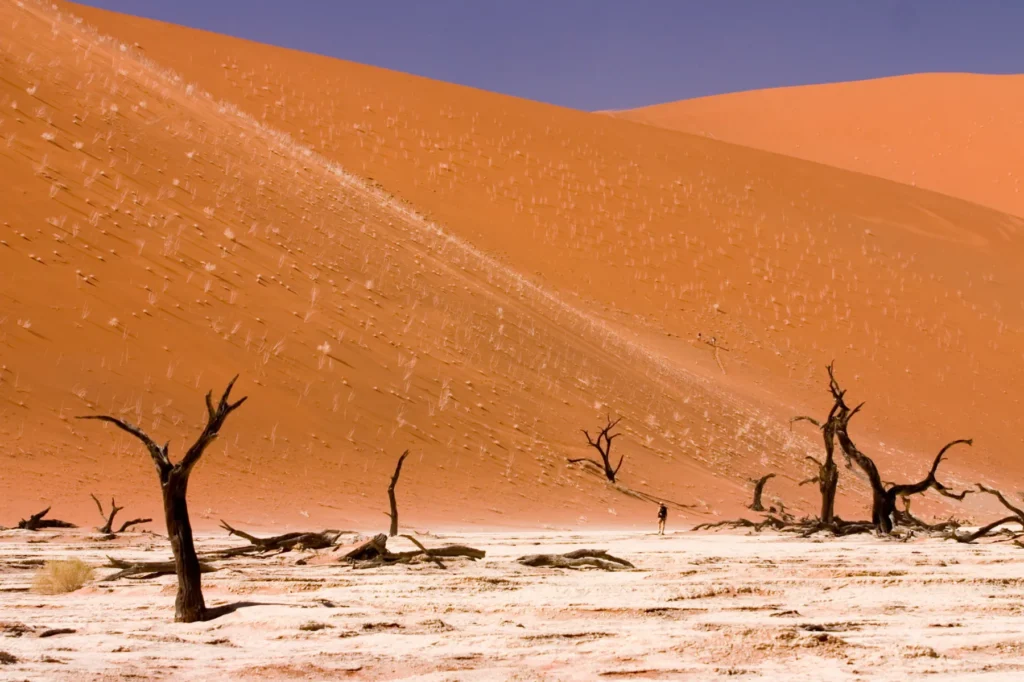
Sossusvlei is a large, endorheic (closed) salt and clay pan, meaning it has no outflow of water. It forms part of a network of clay pans in the region, with the most famous being Deadvlei. The creation of these pans is the result of intricate interactions between eolian (wind-driven) and fluvial (water-driven) processes. The Tsauchab River, an ephemeral watercourse that occasionally flows after rare rainfalls, terminates at Sossusvlei, bringing water that sustains the formation of the pan. However, over millennia, the Tsauchab River has been unable to breach the wall of sand dunes that surround the area, allowing water to pool and then evaporate, leaving behind layers of salt and clay.
The defining feature of Sossusvlei is its colossal sand dunes, some reaching heights of over 300 meters (980 feet), among the tallest in the world. These dunes, formed primarily from quartz sand, have accumulated over millions of years. The sand itself originates from the erosion of the interior of southern Africa, where rivers like the Orange River transport the material to the coast. The winds of the desert then carry the sand inland, depositing it in vast dune fields that define the Namib Desert.
Formation of the Sand Dunes

The formation of Sossusvlei’s dunes is closely tied to the dynamics of the wind. The Namib Desert experiences strong winds, particularly from the southeast, which carry vast amounts of sand and deposit it in the area. Over time, the constant movement of sand grains led to the formation of large barchan and star dunes.
Barchan dunes, which have a crescent shape, form under unidirectional wind conditions, where the wind blows predominantly from one direction. These dunes migrate slowly over time, advancing downwind as sand is blown from their windward side to their leeward side. Star dunes, which are also common in Sossusvlei, form when winds blow from multiple directions, causing the sand to pile up into pyramid-like shapes with radiating arms.
The brilliant red color of the dunes comes from the high concentration of iron oxide in the sand. Over time, the iron has oxidized, giving the dunes their distinct reddish hue, which intensifies at sunrise and sunset. The older the dune, the deeper the red color, indicating a long process of exposure to the elements.
Deadvlei: A Time Capsule of Ancient Life
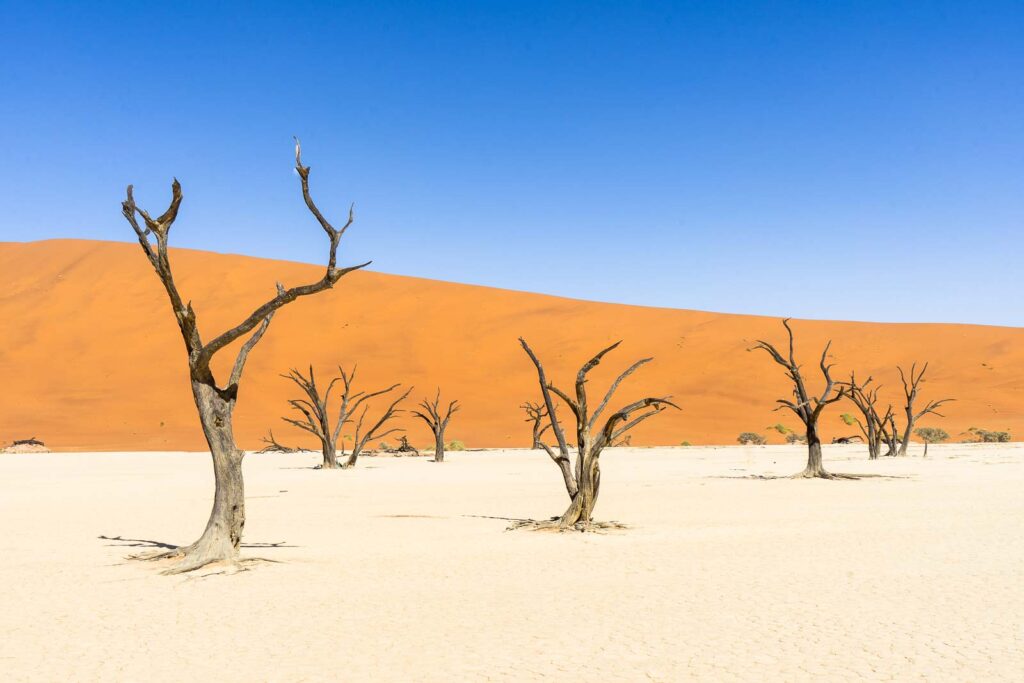
Adjacent to Sossusvlei is Deadvlei, a similarly iconic feature, known for its petrified trees set against the backdrop of white clay and red dunes. Thousands of years ago, Deadvlei was once an oasis, sustained by the waters of the Tsauchab River. Camel thorn trees (Acacia erioloba) flourished in this environment, until the encroaching dunes cut off the river’s flow. Without water, the trees died, but due to the arid conditions, they never decomposed, leaving behind skeletal remains that are over 900 years old. These ancient, preserved trees create a haunting yet visually striking contrast against the vibrant dunes and the cracked white surface of the pan.
Climate and Weathering Effects
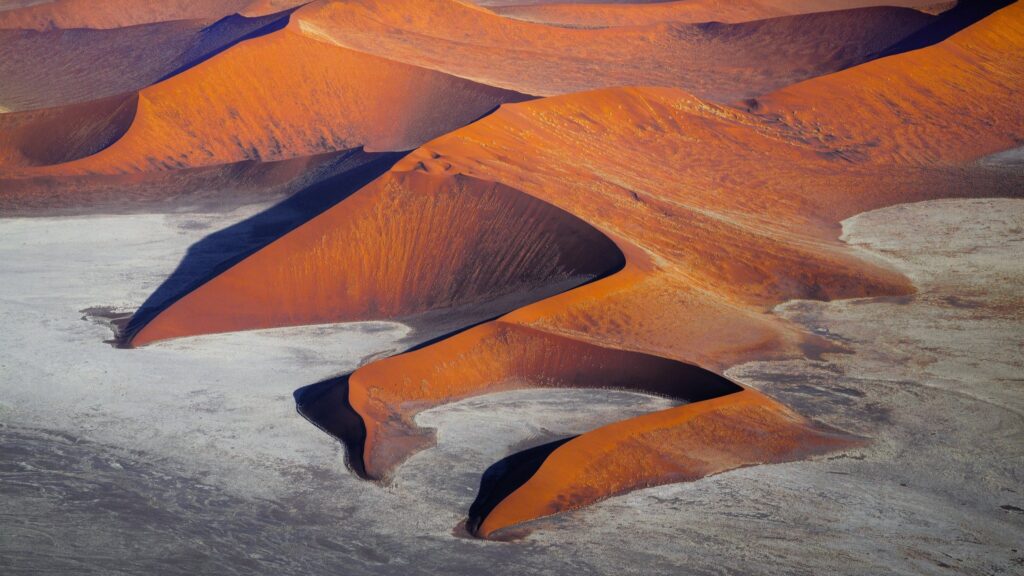
The extreme aridity of the Namib Desert plays a crucial role in the preservation and formation of the unique geological features of Sossusvlei. With annual rainfall averaging between 10 to 85 millimeters, water is a rare and precious resource in the region. When rainfall does occur, typically in the form of rare thunderstorms, it can trigger short-lived floods in the Tsauchab River, briefly transforming the pans into shallow lakes. These events are infrequent, occurring once every few years or even decades, but they are vital in maintaining the clay pans.
Physical weathering, particularly through temperature fluctuations between day and night, also plays a role in shaping the landscape. The desert experiences significant diurnal temperature variations, with daytime temperatures often exceeding 40°C (104°F), while nighttime temperatures can drop below freezing. This daily expansion and contraction of rock surfaces lead to mechanical breakdown over time.
The Aeolian Landscape: Shifting Sands
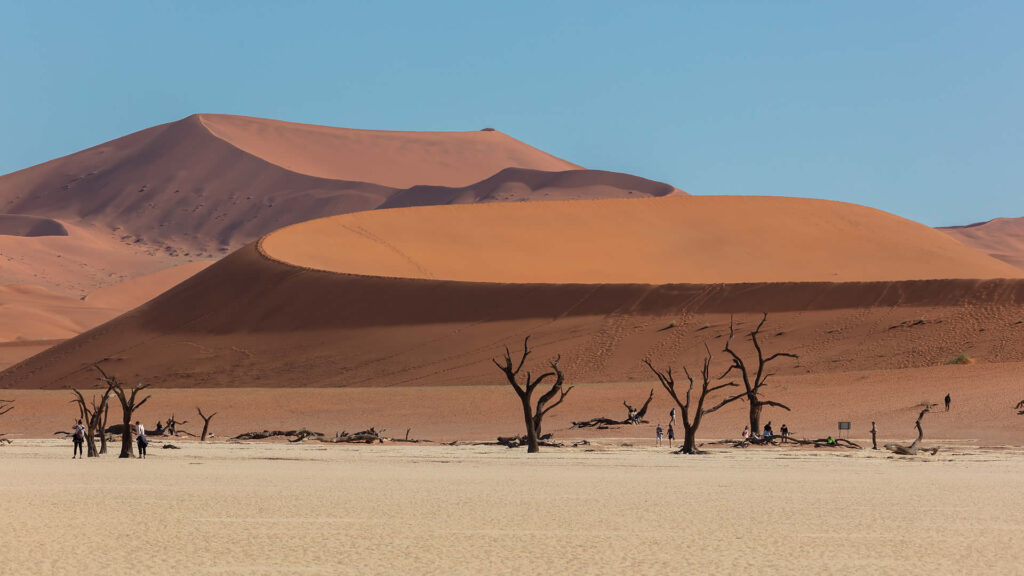
Wind is the most powerful geological agent in the Namib Desert, constantly reshaping the dunes of Sossusvlei. The sand grains that make up the dunes are mostly fine and well-sorted, carried by the wind from the coast inland. The dunes are primarily composed of quartz, with minor amounts of feldspar, which gives them their distinctive appearance.
The Namib Desert’s winds predominantly blow from the southeast, but their seasonal variability also allows for the formation of complex dune patterns. During the winter months, the Bergwind, a hot, dry wind from inland, sweeps across the desert, contributing to the formation of star dunes and the general movement of sand across the landscape. This constant reshaping of the dunes creates a dynamic, ever-changing landscape that defies permanence.
Biodiversity in a Harsh Environment
Despite the extreme conditions, Sossusvlei is home to a surprising amount of life, adapted to survive in the harsh environment. The presence of fog, generated by the cold Benguela Current off the coast, provides a crucial source of moisture for desert-adapted plants and animals. Fog beetles, lichen, and succulent plants, such as the Welwitschia mirabilis, extract moisture from the fog to survive. Additionally, animals like oryx, springbok, and various reptiles have evolved to cope with the lack of water, often obtaining their fluids from the food they consume.
Conclusion: Sossusvlei – A Living Geological Archive
Sossusvlei is more than just a picturesque landscape; it is a living geological archive that tells the story of millions of years of geological processes. From the ancient bedrock of the African craton to the wind-sculpted dunes, every element of this region speaks to the power of natural forces at work over vast timescales. Its towering dunes, ephemeral rivers, and fossilized trees offer a glimpse into a world shaped by the relentless interplay between wind, water, and time, making it one of the most fascinating and otherworldly places on Earth.
The geological processes that define Sossusvlei continue to shape its landscape, offering insights into the dynamics of desert environments and the forces that govern them. For geologists, Sossusvlei represents a rich field of study, where ancient and modern processes converge, creating a unique window into the Earth’s past and the ongoing evolution of desert ecosystems.



